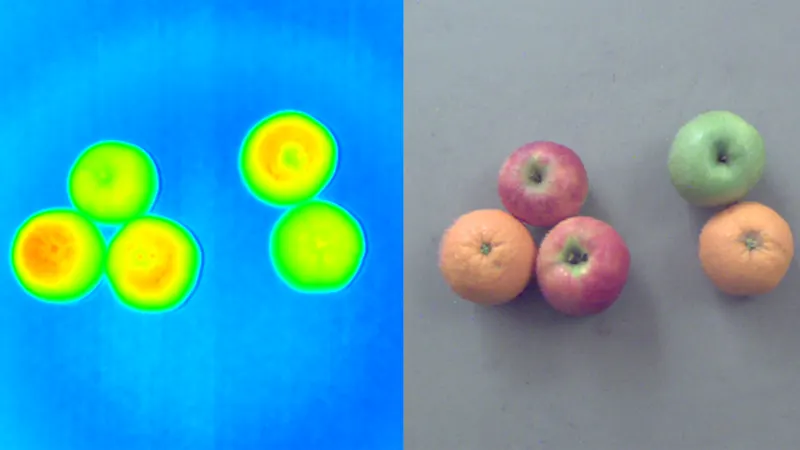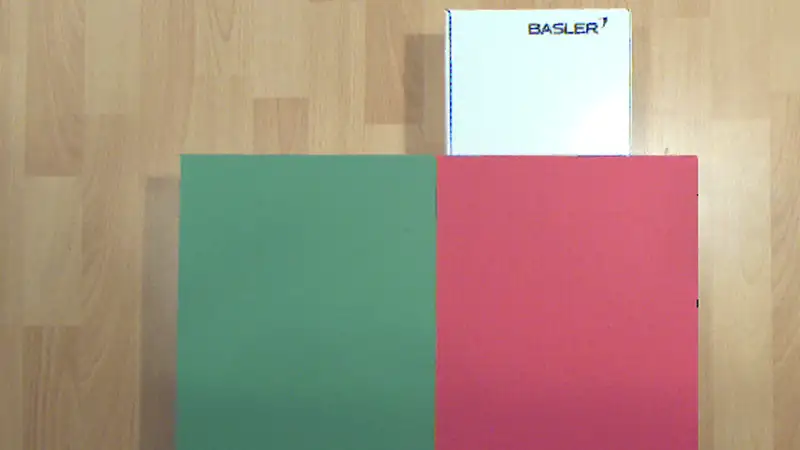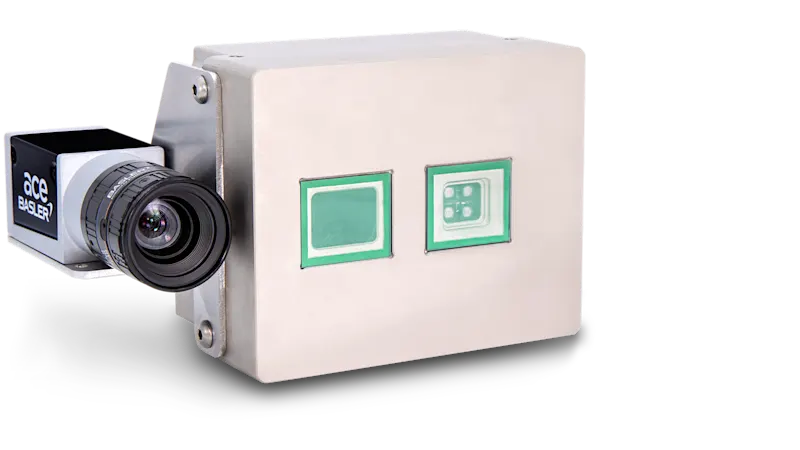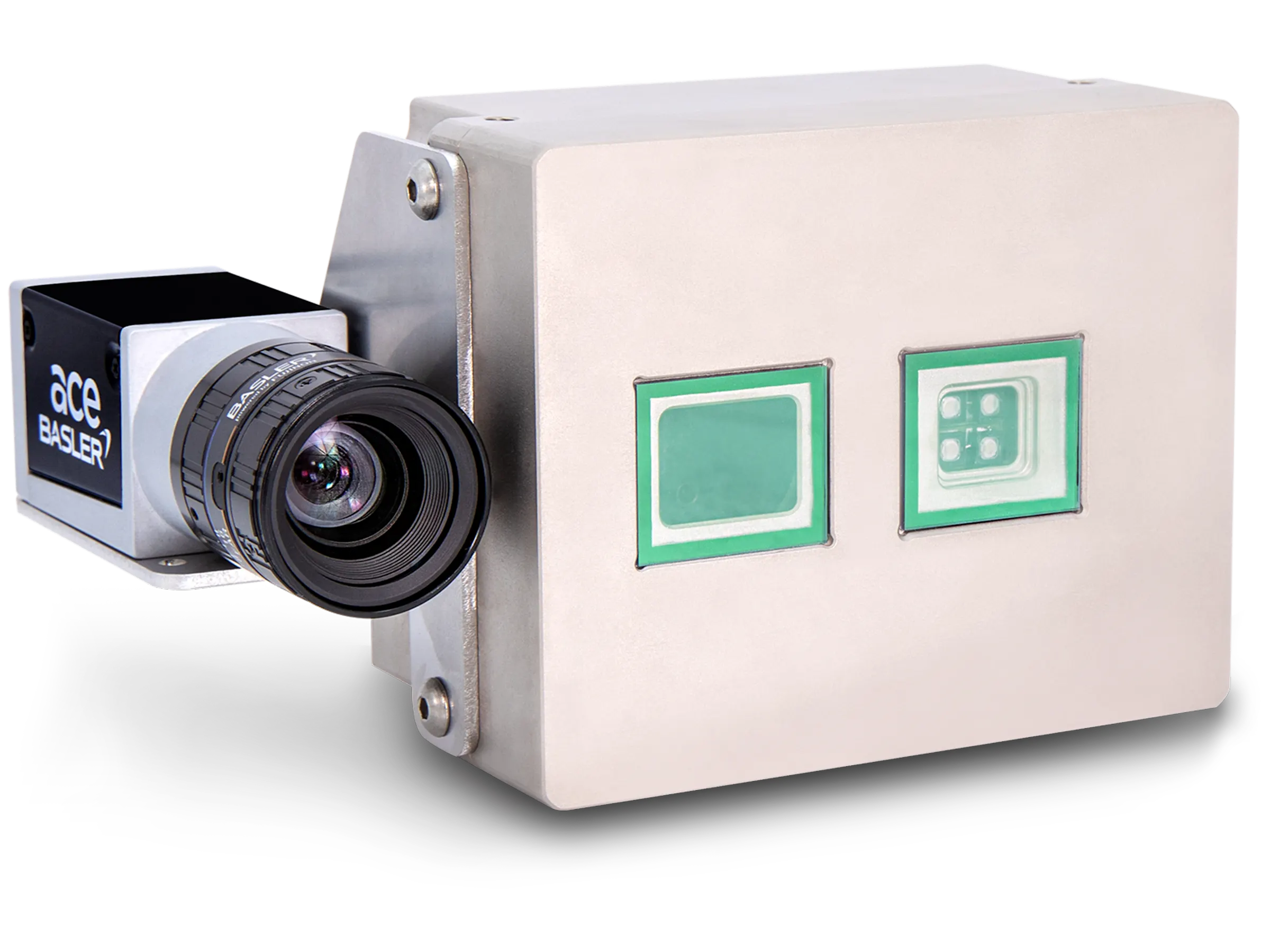
Basler RGB-D Camera
3D depth information in true colors
Combine spatial depth data from the Basler ToF Camera with RGB data from a 2D area scan camera and the result is a 3D point cloud in the colors seen by the human eye. The advantages: better scene understanding and more precise recognition of similar objects.
Color 3D point clouds with the Basler ToF Camera
3D point cloud in false colors
The Basler ToF Camera provides 3D data as a range map or point cloud containing the x/y/z 3D coordinates for each sensor pixel. To make the evaluation user-friendly, the points are often displayed in rainbow colors (rainbow color mapping). Depth values in the near range appear red to yellow while distant values are green to blue.
3D point cloud in RGB colors
The RGB-D camera combines the depth values of the Basler ToF camera with the separately recorded color values of an RGB camera. This allows point clouds to be displayed in the colors that are actually present. This can be used to compensate for missing depth information, to perform additional classifications based on object color, or to facilitate scene understanding.
The operating principle of RGB-D cameras
Our Application Note "Combining Color Data from Basler 2D Cameras with Depth Data from Basler blaze" explains how depth values can be displayed in true RGB colors by combining a 3D camera with a color camera.
Why use RGB-D cameras?
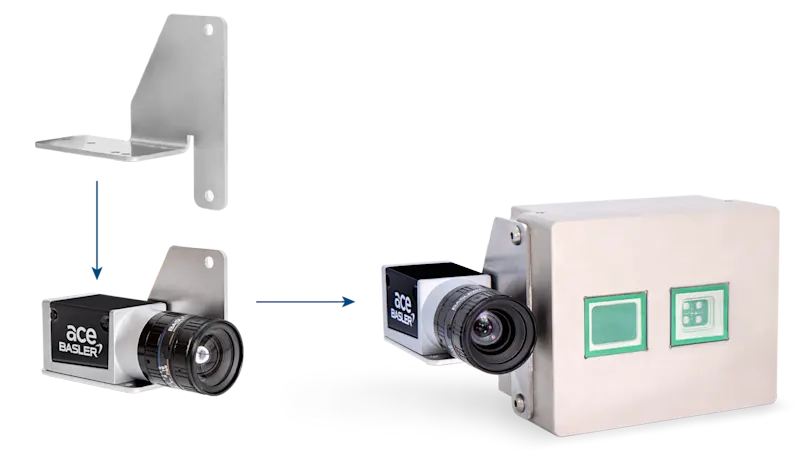
Ready for immediate use with mounting bracket
The Mounting Bracket connects the 3D camera to the 2D color camera. The appropriate mounting bracket allows the Basler ace or ace 2 camera to be quickly and accurately mounted to the Basler ToF Camera to create your RGB-D camera.
Compatible 3D cameras
Recommended 2D cameras
Camera | Sensor | Resolution | Shutter technology | Sensor format | Recommended lens | Field of view |
Python1300 sensor | 1.3 MP | Global shutter | 1/2" | 83° x 67° | ||
IMX392 sensor | 2.3 MP | Global shutter | 1/2.3" | 89° x 57° | ||
IMX392 sensor | 2.3 MP | Global shutter | 1/2.3" | 89° x 57° | ||
IMX273 sensor | 1.6 MP | Global shutter | 1/2.9" | 68° x 51° | ||
EV76C570 sensor | 2 MP | Global shutter | 1/1.8" | 67° x 51° | ||
IMX547 sensor | 5 MP | Global shutter | 1/1.8" | 63° x 53° | ||
IMX547 sensor | 5 MP | Global shutter | 1/1.8" | 63° x 53° |
